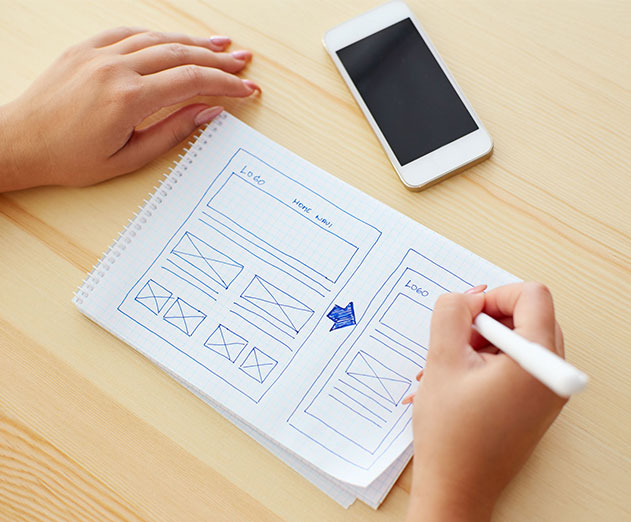Programming
Explaining the app development process to clients
Monday, February 20, 2017

|
Daniel Szabo |
How to explain the mobile app development process to clients so you can get your job done faster.
Revenue from mobile apps is expected to reach $70 Billion in 2017. Yet, developing a successful mobile application is not an easy task. As a developer, you understand the mobile app development process, but may struggle to explain it to your clients. This misunderstanding creates challenges in the development process itself, and can even cause an unsuccessful deployment.
It’s important to explain the mobile app development process to your clients so that they can clearly articulate the business requirements, and ensure realistic expectations about the journey you are about to embark on together.
The first thing you need to realize, however, is that the business aspect of the mobile app development process started well before they reached out to you.
Business people may not understand the intricacies of app development, but they do feel the pain of their business challenges. They want solutions, they want them fast, and they don’t want to pay more than necessary.
Here are the steps a business goes through that lead to a mobile app development project for you.
1.) Identifying the Use Case: Businesses are typically looking to improve productivity, arm their mobile workforce, solve a key customer challenge, or even introduce an entirely new service to the market. Once the opportunity is analyzed and determined to be worth the investment, a budget will be allocated and someone tasked with leading the project.
2.) Building the Right Team: The business owner of the project will start by identifying the resources he or she needs to allocate. Typical development projects include a project manager, a designer, and a quality assurance (QA) lead, as well as the developer or development team. Costs and timing will be discussed, and contracts will be signed.
3.) Project Planning: At this stage, the project manager will gather the team together and map out the timing, detailed costs, priorities, deadlines, and actions.
4.) Design: The designer will translate the project requirements into a visual prototype or wireframes. Sometimes, the QA person will test these concepts with a group of end users before development even begins.
5.) Development, Testing, and Deployment: This is the part where you come in. We’ll map it out below.
There are a number of key components to the mobile app development process:
Scoping: You will be asked to provide a price and timing estimate for developing the mobile app. The question is, how do you know exactly how long it will take and how much to charge when you don’t have all the details?
It may help to explain that the average mobile app development process takes about 18 weeks including 10 weeks to build the backend and 8 weeks to tweak the front end. Simple apps can take as many as 300 hours to build, while complex apps can take as many as 900 hours.
While costs vary depending on the platform, approach, and your geographic location, the average cost per hour for development skills in North America is $150-$168 / hour. In India, developers come in at $26 - $30 / hour. Total mobile app development costs can range from $3,000 for simple apps to $250,000 for complex mobile apps.
Project Kick-off: Now that you’ve won the project, it’s time to dive into the details of the app’s requirements. It’s important to really understand the use case before going too deep into defining how to solve the user problem or the business requirement.
Development and Deployment: The actual development process can be explained simply as working through these 10 stages:
1.) Building the wireframe
2.) Defining the back-end structure and any server-side logic
3.) Understanding how to manage users of the app
4.) Mapping out the user experience
5.) Data integration approaches to allow users to access and share information
6.) How data will be stored and synchronized
7.) Prototyping and building the user interface (possible QA / testing)
8.) Refining the user interface
9.) Testing the application in real-world settings
10.) Deployment of the mobile app
The process of taking a mobile app from concept to market has many steps. It’s important for developers, business owners, and project managers to understand all the stages of the process before getting started. When you are all on the same page, you build a foundation for a successful mobile app deployment.
This content is made possible by a guest author, or sponsor; it is not written by and does not necessarily reflect the views of App Developer Magazine's editorial staff.
It’s important to explain the mobile app development process to your clients so that they can clearly articulate the business requirements, and ensure realistic expectations about the journey you are about to embark on together.
The first thing you need to realize, however, is that the business aspect of the mobile app development process started well before they reached out to you.
The Businesses Process for Mobile App Development
Business people may not understand the intricacies of app development, but they do feel the pain of their business challenges. They want solutions, they want them fast, and they don’t want to pay more than necessary.
Here are the steps a business goes through that lead to a mobile app development project for you.
1.) Identifying the Use Case: Businesses are typically looking to improve productivity, arm their mobile workforce, solve a key customer challenge, or even introduce an entirely new service to the market. Once the opportunity is analyzed and determined to be worth the investment, a budget will be allocated and someone tasked with leading the project.
2.) Building the Right Team: The business owner of the project will start by identifying the resources he or she needs to allocate. Typical development projects include a project manager, a designer, and a quality assurance (QA) lead, as well as the developer or development team. Costs and timing will be discussed, and contracts will be signed.
3.) Project Planning: At this stage, the project manager will gather the team together and map out the timing, detailed costs, priorities, deadlines, and actions.
4.) Design: The designer will translate the project requirements into a visual prototype or wireframes. Sometimes, the QA person will test these concepts with a group of end users before development even begins.
5.) Development, Testing, and Deployment: This is the part where you come in. We’ll map it out below.
The Development Process for Mobile Apps
There are a number of key components to the mobile app development process:
Scoping: You will be asked to provide a price and timing estimate for developing the mobile app. The question is, how do you know exactly how long it will take and how much to charge when you don’t have all the details?
It may help to explain that the average mobile app development process takes about 18 weeks including 10 weeks to build the backend and 8 weeks to tweak the front end. Simple apps can take as many as 300 hours to build, while complex apps can take as many as 900 hours.
While costs vary depending on the platform, approach, and your geographic location, the average cost per hour for development skills in North America is $150-$168 / hour. In India, developers come in at $26 - $30 / hour. Total mobile app development costs can range from $3,000 for simple apps to $250,000 for complex mobile apps.
Project Kick-off: Now that you’ve won the project, it’s time to dive into the details of the app’s requirements. It’s important to really understand the use case before going too deep into defining how to solve the user problem or the business requirement.
Development and Deployment: The actual development process can be explained simply as working through these 10 stages:
1.) Building the wireframe
2.) Defining the back-end structure and any server-side logic
3.) Understanding how to manage users of the app
4.) Mapping out the user experience
5.) Data integration approaches to allow users to access and share information
6.) How data will be stored and synchronized
7.) Prototyping and building the user interface (possible QA / testing)
8.) Refining the user interface
9.) Testing the application in real-world settings
10.) Deployment of the mobile app
The process of taking a mobile app from concept to market has many steps. It’s important for developers, business owners, and project managers to understand all the stages of the process before getting started. When you are all on the same page, you build a foundation for a successful mobile app deployment.
This content is made possible by a guest author, or sponsor; it is not written by and does not necessarily reflect the views of App Developer Magazine's editorial staff.

Become a subscriber of App Developer Magazine for just $5.99 a month and take advantage of all these perks.
MEMBERS GET ACCESS TO
- - Exclusive content from leaders in the industry
- - Q&A articles from industry leaders
- - Tips and tricks from the most successful developers weekly
- - Monthly issues, including all 90+ back-issues since 2012
- - Event discounts and early-bird signups
- - Gain insight from top achievers in the app store
- - Learn what tools to use, what SDK's to use, and more
Subscribe here









